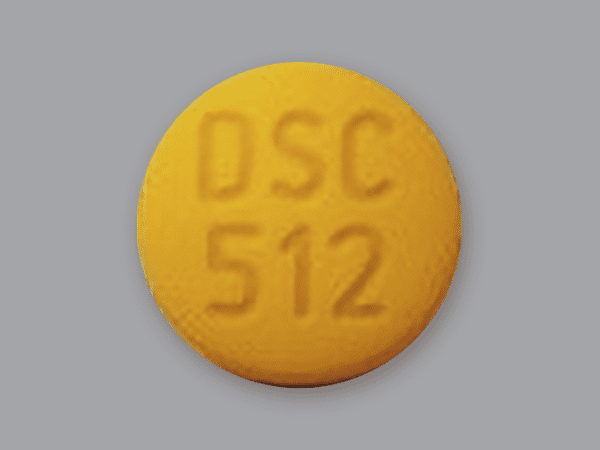Vanflyta Dosage
Generic name: QUIZARTINIB DIHYDROCHLORIDE 17.7mg
Dosage form: tablet, film coated
Drug class: Multikinase inhibitors
Medically reviewed by Drugs.com. Last updated on Feb 5, 2024.
Patient Selection
Select patients for the treatment of AML with VANFLYTA based on the presence of FLT3-ITD mutation positivity [see Clinical Studies (14)]. Information on FDA-approved tests for the detection of FLT3-ITD mutation in AML is available at: http://www.fda.gov/CompanionDiagnostics.
Recommended Dosage
- A treatment course consists of up to 2 cycles of VANFLYTA in combination with induction cytarabine and anthracycline, up to 4 cycles of VANFLYTA in combination with high-dose cytarabine consolidation, and up to 36 cycles of VANFLYTA as maintenance therapy [see Clinical Studies (14)] or until disease progression or unacceptable toxicity. VANFLYTA maintenance therapy should be initiated following consolidation chemotherapy upon blood count recovery of absolute neutrophil count >500/mm3 and platelet count >50,000/mm3.
- See Table 1 for the recommended dosage of VANFLYTA by phase of therapy.
| VANFLYTA Initiation | Induction* | Consolidation† | Maintenance |
|---|---|---|---|
| Starting on Day 8 (for 7 + 3 regimen)‡ |
Starting on Day 6 | Starting on Day 1 | |
| Dose | 35.4 mg orally once daily | 35.4 mg orally once daily |
|
| Duration (28-day cycles) |
Two weeks in each cycle (Days 8 to 21)‡ | Two weeks in each cycle (Days 6 to 19) |
|
For patients who proceed to hematopoietic stem cell transplantation (HSCT), VANFLYTA should be stopped 7 days before the start of a conditioning regimen.
Administer VANFLYTA orally with or without food at approximately the same time each day. Swallow tablets whole. Do not cut, crush, or chew the tablets. If a dose of VANFLYTA is vomited, do not administer a replacement dose; wait until the next scheduled dose is due. If a dose of VANFLYTA is missed or not taken at the usual time, administer the dose as soon as possible on the same day and return to the usual schedule the following day. The patient should not take two doses on the same day.
Monitoring and Dosage Modifications for Adverse Reactions
Initiate VANFLYTA only if QTcF is less than or equal to 450 ms [see Warnings and Precautions (5.1)].
During induction and consolidation, perform ECGs prior to initiation and then once weekly during VANFLYTA treatment or more frequently as clinically indicated [see Warnings and Precautions (5.1)].
During maintenance, perform ECGs prior to initiation, once weekly for at least the first month following dose initiation and escalation, and thereafter as clinically indicated. Escalate the dose only if QTcF is less than or equal to 450 ms [see Dosage and Administration (2.2) and Warnings and Precautions (5.1)].
Correct electrolyte abnormalities (hypokalemia and hypomagnesemia), and if possible, avoid concomitant administration of drugs that prolong the QT interval [see Warnings and Precautions (5.1)].
For recommended dosage modifications due to adverse reactions, see Table 2. For dosage adjustments due to adverse reactions, see Table 3.
| Adverse Reaction | Recommended Action |
|---|---|
| Grades are in accordance with National Cancer Institute Common Terminology Criteria for Adverse Events version 4.03 (NCI CTCAE v4.03). | |
|
|
| QTcF between 450 ms and 480 ms (Grade 1) |
|
| QTcF between 481 ms and 500 ms (Grade 2) |
|
| QTcF greater than 500 ms (Grade 3) |
|
| Recurrent QTcF greater than 500 ms (Grade 3) |
|
| Torsades de pointes, polymorphic ventricular tachycardia, signs/symptoms of life-threatening arrhythmia (Grade 4) |
|
| Grade 3 or 4 non-hematologic adverse reactions |
|
| Grade 3 or 4 hypokalemia (<3 mmol/L) or hypomagnesemia (<0.4 mmol/L or <0.9 mg/dL) |
|
| Grade 4 neutropenia or thrombocytopenia after achieving remission* |
|
| Current Dosage | Modified Dosage |
|---|---|
| 53 mg once daily | 35.4 mg once daily |
| 35.4 mg once daily | 26.5 mg once daily |
| 26.5 mg once daily | Interrupt |
| 17.7 mg once daily | Interrupt |
Dosage Modifications for Strong CYP3A Inhibitors
Reduce the dosage of VANFLYTA when used concomitantly with strong CYP3A inhibitors as shown in Table 4. If the current dosage is 17.7 mg once daily, interrupt VANFLYTA treatment for the duration of strong CYP3A inhibitor use. After discontinuation of a strong CYP3A inhibitor for 5 half-lives, resume the VANFLYTA dose that was taken before initiating the strong inhibitor [see Drug Interactions (7)].
| Current Dosage | Modified Dosage |
|---|---|
| 53 mg once daily | 26.5 mg once daily |
| 35.4 mg once daily | 17.7 mg once daily |
| 26.5 mg once daily | 17.7 mg once daily |
More about Vanflyta (quizartinib)
- Check interactions
- Compare alternatives
- Pricing & coupons
- Drug images
- Side effects
- During pregnancy
- FDA approval history
- Drug class: multikinase inhibitors
- Breastfeeding
- En español
Patient resources
Professional resources
Related treatment guides
Further information
Always consult your healthcare provider to ensure the information displayed on this page applies to your personal circumstances.

